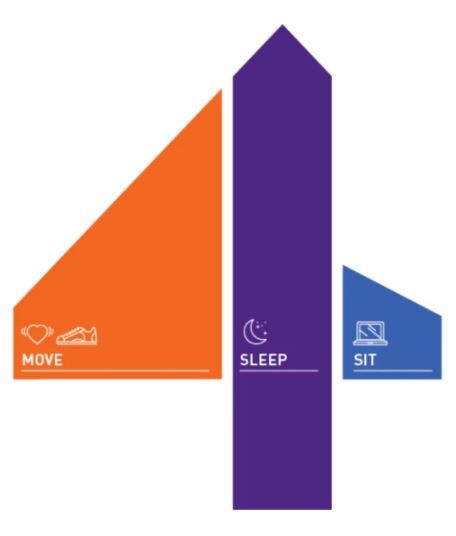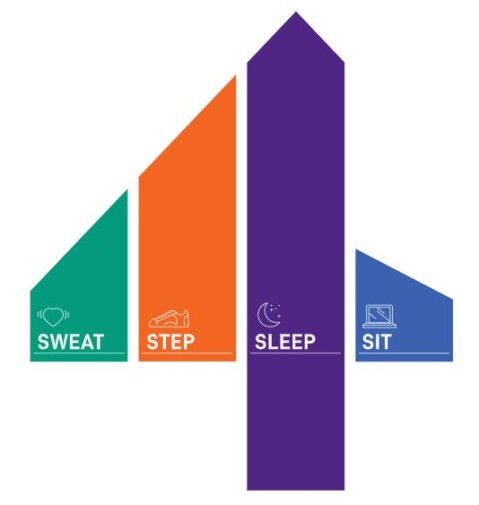How much movement should my children do each day?
What is an acceptable amount of screen time?
How much sleep does my child need?
These are all questions that parents ask on a consistent basis. In order to answer these questions, the 24 hour movement guidelines were developed by the Canadian Society for Exercise Physiology (CSEP). On this page, we will explore both the guidelines for the early years (0-4 years old) and for children and youth (5-17 years old). In this article, we will focus mainly on the movement portion of these guidelines.
Early years
Children in the early years need to engage in as much movement as possible. Encouraging movement at this age allows children to explore the many different ways their body can be used, as well as aiding in cognitive and social development.
Infants (0-1 year old)
Infants should engage in physical activity many times throughout the day. Physical activity for an infant involves interactive floor-based play. For those not yet mobile, this can include tummy time, playing peekaboo, manipulating the limbs of the infant and tickling. For infants that are able to crawl, let them explore the environment and provide objects and toys for them to move to and move around.

Toddlers (1-2 years old)
Toddlers want to move and be active! The guidelines speak of 180 minutes of physical activity throughout the day, including vigorous physical activity where the child is getting hot and thirsty. We can encourage this play be engaging with the toddler and piquing their interest with items that make noise and are colourful. An example would be rolling a ball with a bell in it away from the child and having them chase after it. Another example may be running away from them with a ‘tail’ (such as a tea towel or rope hanging from your pocket) and encouraging them to grab it.
At this age, children are more likely to begin attending a childcare facility. Depending on the length of time in the program, the facilities are required to engage the child in physical activity. It is recommended that a child obtain 120 minutes of the required 180 minutes per day at their childcare facility. If you would like to know how PISE can help with this, please contact us!
Preschoolers (3-4 years old)
Much like toddlers, 180 minutes of physical activity is recommended for this age range. At least 60 minutes of this should include highly energetic play, involving running, jumping and many more movement skills. Children at this age can begin to develop the movement skills that will keep them engaged in physical activity for life. Providing a wide range of diverse play opportunities with different objects and equipment, as well as in as many environments (such as in the water, on ice, in a forest, on a beach etc) as possible is optimal for child development.
Importantly for all children ages within the early years is reducing the time where the child is restrained. Depending on their age, this can include being in a high chair, stroller, Bumbo, exersaucer, Jolly Jumper and car seat.
Children and youth
Children and youth are defined as anyone between the ages of 5 and 17 years old. It is recommended that children engage in 60 minutes of moderate to vigorous physical activity involving any kind of aerobic activity every day. When considering this amount, we may think that children receive this at school. Some children may get this during a combination of recess and physical education, but the majority of children and youth will not. Much of the recommended 60 minutes should take place outside of the school environment. This does not have to mean organised sports, and can include play with neighbours, running with parents or any other form of aerobic activity.
In addition to the aerobic activities, bone and muscle strengthening activities should be incorporated at least 3 days per week. Bone and muscle strengthening activities can include body weight exercises, jumping games and activities and lifting grocery bags to the kitchen. It is not recommended for children under 12 years old to engage in lifting weight and using exercise machines, unless supervised by a fitness professional.

If your child is interested in learning more on exercises to build aerobic capacity and strength, please contact us! We have many programs and options for youth, including consultation with your school.

